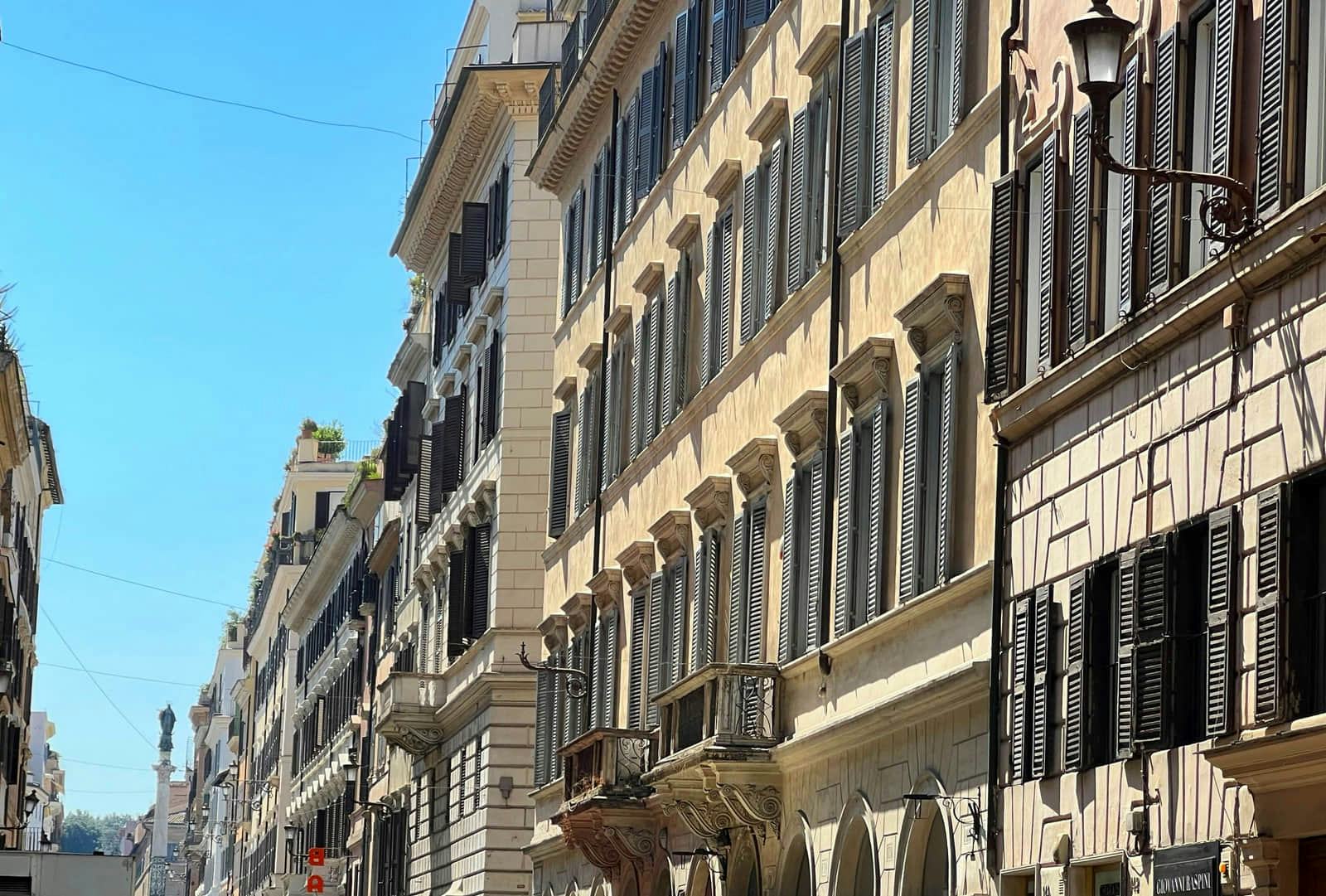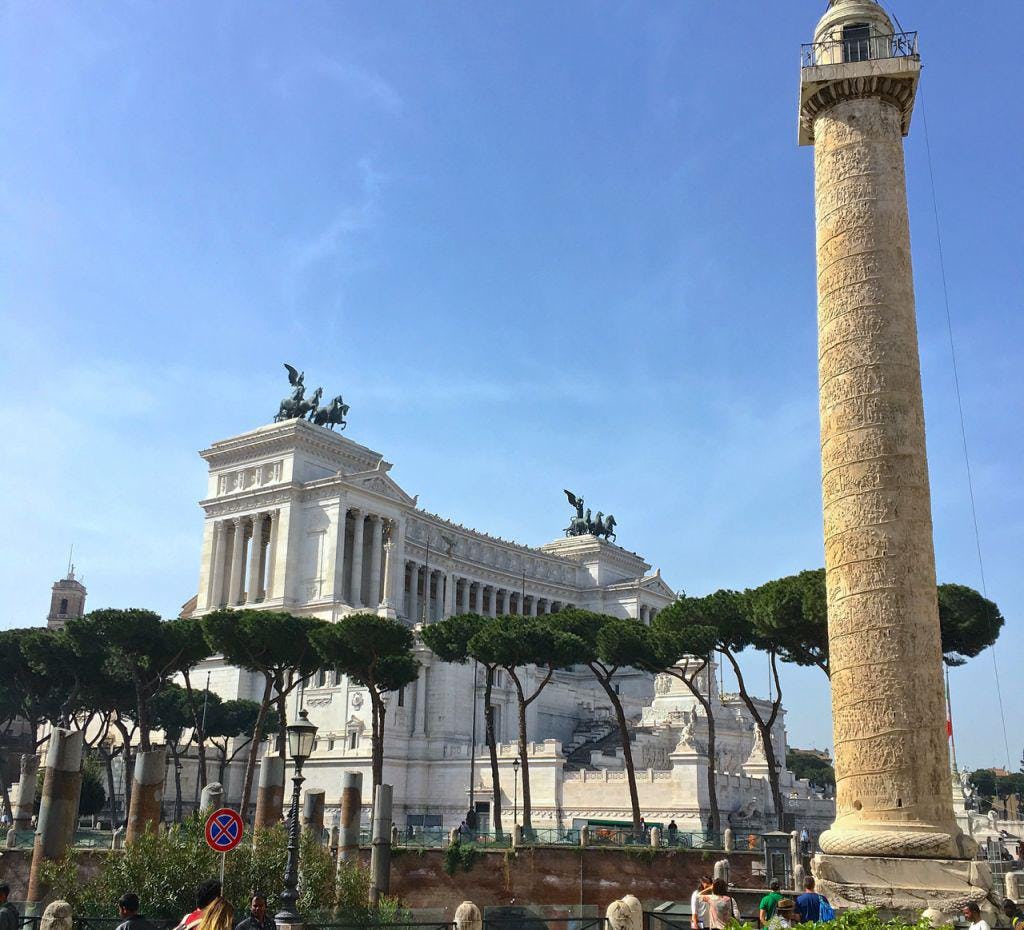- Loading...
Beautiful penthouse on two floors with panoramic terraces
Rome, historic center, Rione Campo Marzio. In the historic center Roman, in Via Vittoria, road that connects Via del Corso to Via del Babuino, a wonderful panoramic penthouse with a terrace and a wonderful terrace overlooking.
- Ref. GGV44
- 160 sqm.
- 2 Bedrooms
- 2 Bathrooms
Rome, historic center, Rione Campo Marzio. In the historic center Roman, in Via Vittoria, a road that connects Via del Corso to Via del Babuino, in the center of the urban area of the famous Trident, enclosed by the streets of repeat and Babuino and centered on Via del Corso, we sell a wonderful Panoramic penthouse with a level terrace and a wonderful overlooking terrace.
The penthouse is placed on the plans 4 and 5 of a classic period building that has well preserved the topographical aspect that had in ancient the medieval and Renaissance neighborhoods of Campo Marzio.
The house is distributed as follows: large entrance, connection corridor to the sleeping area consisting of a double bedroom, a bathroom, accessories, wardrobe room and a connection staircase to the upper level consisting of double living room, kitchen, bedroom , bathroom and loft area.
The property includes a terrace of approximately 35.00 square meters, at the level of the sales show, and a wonderful superonant master terrace of approximately 134.00 square meters.
Currently leased, contract expires in June 2023, with annual rent of € 36,000.00.
Excellent opportunity
Details:
Rione Campo Marzio
Penthouse 2 levels
120.00 square meters covered
170.00 square meters terraces
Commercial 160.00 square meters
Via Vittoria:
There are certainly many streets whose toponym has questionable or even mysterious origins, but undoubtedly this Via Vittoria offers a singular case of toponymy. The rufini in 1847 stated that this street "came so called because I believed there were two brothers and another young man who in the rides and racing succeeding several times winners, were accompanied to their house crowned in laurel and olive tree with Plausi and screams of victory ". Nice but difficult to accept, as follows the explanation that causes the name of the way to descend that here they lived there, during the French revolution, the aunts of Louis XVI, Adelaide and Vittoria, though forgetting that the toponym is older than At least two centuries and, moreover, why only victory and not even Adelaide? Others still indicate a document, the "Taxae Viarum" of 1617, from which it appears that in the street lived and operated such Stephen Victoria, weaver of a certain notoriety: perhaps it is the most acceptable explanation.
This route connects Via del Corso to Via del Babuino and originated in the context of a unitary operation of the urban structure of the Trident, an episode that concluded the "Renovatio Urbis" of the Roman Renaissance, begun by Pope Leo X (1510) and completed below Paul III.
The way also had the name "of the Orsoline" for the founded monastery, together with the church named by the ss.giuseppe and Orsola, from Camilla Borghese Orsini in the first half of the seventeenth century and entirely rebuilt between 1760 and 1779 by Mauro Fontana and Pietro Camporese il Old. With the advent of Roma Capitale and with the dissolution of religious corporations, the Orsulines were forced to clear the building that became state property. In 1839 the premises of the former convent were granted to the Academy of Santa Cecilia and for this reason the complex was adapted and renovated: the church was disconcerated and became a concert hall, then used as a acting hall for the Academy of Art Dramatic.
Another historical memory that attracts us is the tombstone above the door to the number 60: "S.P.Q.R. Giuseppe Garibaldi in April MDCCCLXXIX (1879) lived in this house where he was visited by King Umberto I - XX September 1882". Garibaldi stopped, therefore, in this house where he designed projects to make the waters of the Tiber divert and thus avoid the floods of the city. No project Garibaldo was made (fortunately!), Also because very imaginative, like that to deviate the course of the river by digging a huge gallery under Monte Mario, or cover it completely, creating on its course a beautiful boulevard similar to those that constitute the Paris pride. What was realized, instead, was the project of the Muraglioni del Tevere, which, although they have definitively eliminated the terrible floods of the river that so many destruction caused, they also modified the aspect of the river and its connection with the city, destroying many corners Picturesque.
The Rione:
The heraldic symbol of the Rione Campo Marzio is a crescent in the blue field, perhaps taken from the martial image of a cemetery adorned with a sickle moon. In fact Tito Livio tells that the "Campo dei Tarquini consecrated in Mars was destined for military and exercises from the Rome Foundation". Polo attraction of the area, from a very ancient period, was a sanctuary, the macra of Mars. This altar was connected with the main function of this plain, the military one, so important to give its name to the area. As a military field he felt very soon and with the increase in the cavalry arranged by Giulio Cesare, the military field moved to "Centum Cellaee" (Centocelle, a new district of Rome) and the soldiers housings, especially the barbarian armed, were Places on Celio. The Marzio camp was not inhabited until the Empire, when he joined the IX Regio. The Rione was set up on 18 May 1743 with Chirograph of Benedict XIV. The medieval and Renaissance neighborhoods of Campo Marzio have largely preserved the orientation and topographic aspect they had in ancient. Numerous roads still follow the primitive path: not only the route of the course ("Via Lata") but also straight axes formed by Via della Scrofa-Via di Ripetta; Via dei Coronari- Via delle Coppelle; Via dei Giubbonari-Campo dei Fiori-Via del Pellegrino, to name just a few. This due to the continuity of life that has allowed the preservation of the ancient urban planning. It is certainly the district that more than the others can boast the most famous monuments in the world, such as Piazza del Popolo, Piazza di Spagna, the Trinità dei Monti Staircase and the Mausoleum of Augustus.
Price
POA
- Loading...
Price











































































